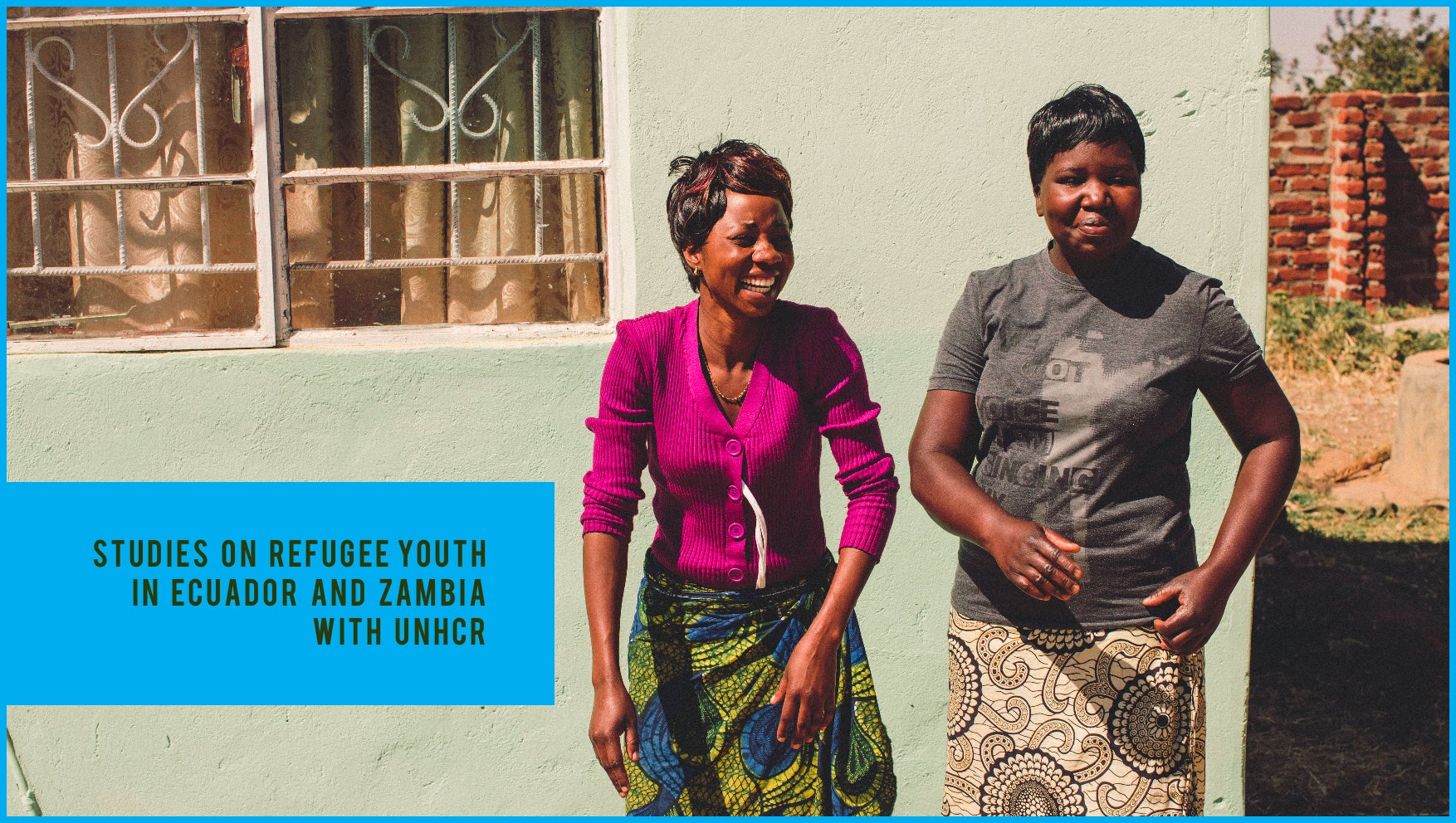Over sixty percent of the world’s 21.3 million refugees now live in urban areas, over half of whom are children. This requires a fundamental rethink of humanitarian strategies to meet their needs, strategies traditionally designed for the challenges of refugee camps, and a corresponding shift in the emphasis of researchers. In 2016, Harvard FXB completed data collection on two studies that constituted UNHCR’s first systematic effort to understand the impact of its protection work with adolescent refugees living in cities. This project was conducted in two very different urban settings: in Lusaka, capital of Zambia, and in the cities of Quito and Lago Agrio, Ecuador.
Mixed methods research in both countries first sought to define and describe the existing protection system for urban adolescent refugees ages 15-19, and the role of UNHCR within that system. Second, the two projects assessed the effects of the existing protection system on the health and wellbeing of youth refugees by examining a wide range of indicators in the areas of education, livelihoods, psychosocial and physical health, home life, safety and violence, and knowledge and use of available programs.
Ecuador is host to Latin America’s largest refugee population. The country has a remarkably progressive approach to migration, which serves as a powerful counter-example to current global trends of border securitization and social exclusion of migrant populations. Nevertheless, study results demonstrate considerable room for improvement in how this progressive vision is realized in the lives of urban adolescent refugees in Ecuador. Problems persist, primarily in implementation of current law and policy, but also with program design. These are compounded by structural, social and political challenges relevant to this highly vulnerable and hidden group. Many refugee youth do not gain the education and skills that would allow them to flourish and contribute to Ecuadorian society. Many do not receive the necessary support to counteract mental and physical harm inflicted before, during, or after migration, the result of abuse or discrimination suffered in Ecuador.
Unlike Ecuador, Zambia has an official encampment policy that restricts most of the country’s estimated 57,000 refugees to settlements. It limits the number allowed in urban areas, and criminalizes those who move to the city without required permissions. Zambian law limits refugees’ rights to elementary education and wage-earning work. The FXB study found that the protection system for youth refugees living in Lusaka has highly limited reach and visibility. There are stark differences across nearly all outcomes for those youth living in the city with required permissions, and those without. The restrictive legal and policy framework, combined with pervasive discrimination in the public and private spheres, compound to violate their rights and stifle their long-term contributions to Zambian society.
Read our reports on refugee youth in:
Ecuador ZambiaFor the Ecuador Report in Spanish, click here.

